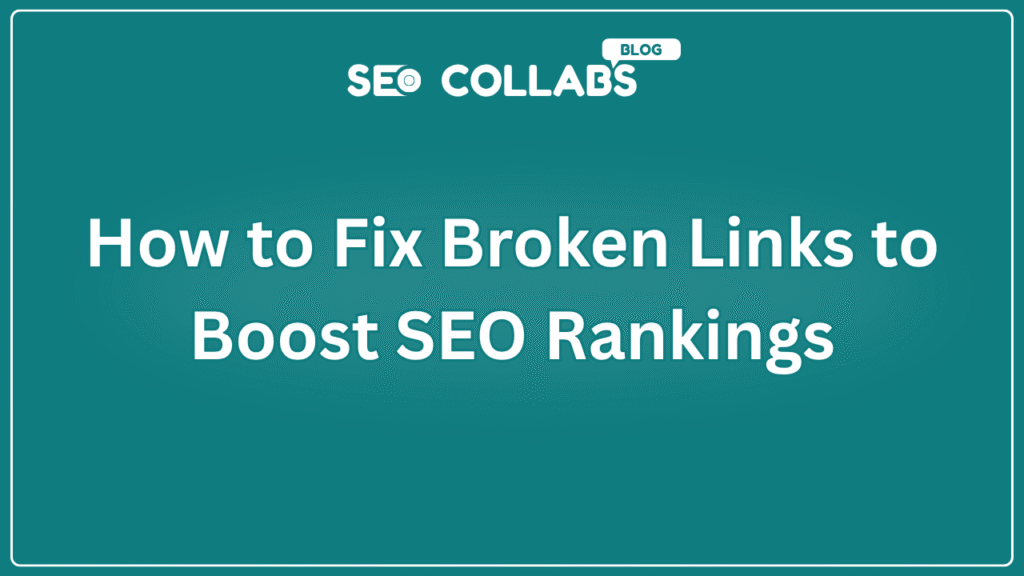Picture this: A single broken link on your site could be costing you hundreds of visitors, tanking your rankings, and signaling to Google that your site is outdated. In our agency’s 2025 audit, we found that 68% of websites had broken links draining their SEO potential, and fixing them became the fastest, most cost-effective ranking boost we’d ever seen. Here’s how to find, fix, and prevent broken links to reclaim lost traffic and rankings.
Table of Contents
Why Broken Links Are SEO Kryptonite
Broken links (404 errors) occur when a page is moved, deleted, or mistyped. They sabotage your SEO by:
- Harming User Experience: Visitors hit dead ends and bounce.
- Wasting Crawl Budget: Googlebot wastes time on dead pages instead of indexing valuable content.
- Killing Link Equity: Passing no SEO value to linked pages.
Step 1: Find Broken Links Like a Pro
Tools to Use:
- Google Search Console
- Go to Coverage > Excluded to find “404 (Not Found)” errors.
- Screaming Frog
- Crawl your site → Filter by “Broken Links” (Client: Fixed 112 broken links in 1 hour using this).
- Ahrefs/SEMrush
- Use “Site Audit” to detect broken internal/external links.
- Broken Link Checker
- Free plugin for WordPress users.
Step 2: Prioritize High-Impact Fixes
Not all broken links are equal. Focus on:
- High-Traffic Pages: Broken links on popular posts hurt more.
- Backlinked Pages: Pages with external backlinks are losing equity.
- Key Conversion Paths: Checkout pages, lead magnets, or pricing sheets.
Step 3: Fix Broken Links (3 Solutions)
Method 1: Redirect with 301s
- When: The page has moved or been renamed.
- How: Use .htaccess (Apache) or plugins like Redirection (WordPress).
- Code: Redirect 301 /old-page/ https://yoursite.com/new-page/
Method 2: Update the Link
- When: The target page still exists, but the URL has changed.
- How: Manually correct the link in your CMS.
Method 3: Remove the Link
- When: The linked content is irrelevant or gone.
- How: Delete the link or replace it with a relevant alternative.
Step 4: Prevent Future Broken Links
- Use Redirect Plugins: Automatically redirect deleted pages.
- Audit Quarterly: Schedule Screaming Frog crawls every 3 months.
- Monitor Backlinks: Tools like Ahrefs alert you when external sites link to broken pages.
- Update Content: Replace outdated resource links annually.
How Broken Links Tie Into Your Overall Strategy
Fixing broken links optimizes internal linking, but external backlinks drive authority. For a deeper dive, read: Internal vs. External Links: What’s the Real Difference?.
Also Read
How SEO Collabs Complements Your Fix Efforts
While fixing broken links stops leaks, building high-quality backlinks fills your site with authority. SEO Collabs accelerates this by:
- Connecting You with Vetted Partners: Secure guest posts on authoritative sites to replace lost link equity.
- Automating Outreach: Save hours finding collaborators with our templated pitch system.
- Ensuring Link Health: Built-in alerts flag toxic or broken links in your backlink profile.
Your Checklist to fix Broken Links
- Crawl: Use Screaming Frog or Google Search Console.
- Prioritize: Fix broken links on high-traffic pages first.
- Redirect: Implement 301s for moved content.
- Build: Use SEO Collabs to replace lost equity with authoritative backlinks.
Conclusion
Broken links aren’t just errors—they’re opportunities. By auditing, redirecting, and pairing fixes with strategic backlinks via SEO Collabs, you’ll transform site health into rankings, traffic, and trust.
Ready to Fix and Flourish?
👉 Try SEO Collabs to repair your site’s foundation and build an unshakable backlink profile.
Why SEO Collabs?
- Quick Setup: Start fixing and building in minutes.
- Penalty-Proof: All partnerships follow Google’s guidelines.
- Transparent Results: Track traffic and DA growth in real time.
Don’t let broken links bleed your SEO—turn them into your comeback story. 🚀




